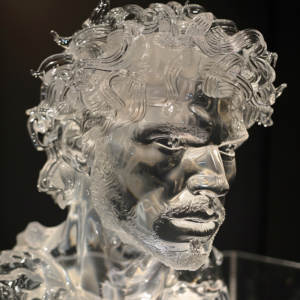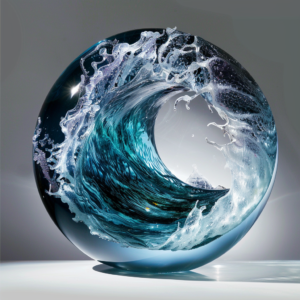Glass sculpting, with its ability to manipulate light and form, transcends mere aesthetics. It becomes a cultural mirror, reflecting the traditions, beliefs, and social norms of the societies that create it. Let’s embark on a journey across the globe, exploring how glass sculpting serves as a unique language for expressing cultural identity.
Europe: A Legacy of Refinement and Symbolism
European glass sculpting boasts a rich history, with countries like Italy, France, and the Czech Republic playing a pivotal role. Venetian glass, renowned for its intricate details and vibrant colors, often incorporates floral motifs and religious symbolism, reflecting the artistic and religious traditions of the region. In contrast, contemporary European sculptors like Magdalena Abakanowicz (Poland) utilize glass to explore social and political themes, challenging societal norms and reflecting on the human condition.
North America: A Melting Pot of Influences and Experimentation
North American glass sculpting is a vibrant tapestry of styles and techniques. Artists like Dale Chihuly are celebrated for their large-scale installations that transform public spaces with bold colors and dynamic shapes, reflecting the American spirit of innovation and experimentation. The Studio Glass movement, born in the mid-20th century, championed the focus on individual expression and experimentation with the medium, leading to a diverse range of artistic styles. Glass sculptures in North America can depict anything from Native American themes to abstract explorations of the human psyche.
Asia: A Fusion of Ancient Traditions and Modern Expression
Asian glass sculpting offers a captivating blend of age-old techniques and contemporary innovation. Japan boasts a rich history of glassblowing, with artists like Hiroshi Sugimoto creating mesmerizing sculptures that explore themes of light, shadow, and perception, reflecting the Japanese focus on minimalism and the beauty of imperfection (wabi-sabi). Chinese glass sculptors often incorporate elements of their cultural heritage, such as calligraphy and traditional motifs like dragons and phoenixes, into their works, ensuring a connection to their rich history.
Latin America: A Celebration of Vibrancy and Social Commentary
Latin American glass sculpting is characterized by its vibrant colors and expressive forms. Artists like Liliana Fonseca (Argentina) utilize glass to explore themes of identity, memory, and the natural world, reflecting the region’s rich cultural heritage and connection to nature. Mexican glass sculptors often draw inspiration from their pre-Columbian past, incorporating symbols and motifs from ancient civilizations into their works. The use of recycled glass is also gaining traction, with artists addressing environmental concerns and reflecting the region’s spirit of resourcefulness.
Africa: A Story of Resilience and Cultural Expression
African glass sculpting is a relatively young art form but is rapidly gaining recognition. Artists like John Vladis (South Africa) utilize glass to tell stories of resilience, cultural identity, and the African diaspora, reflecting the continent’s rich history and complex social realities. The use of found objects and recycled materials is becoming a defining characteristic of African glass sculpting, highlighting the continent’s resourcefulness and ingenuity.
Conclusion: A Tapestry of Cultural Voices
The exploration of glass sculpting across different societies reveals a tapestry of cultural voices. From the refined techniques of Europe to the bold experimentation of North America, from the fusion of tradition and modernity in Asia to the vibrant expressions of Latin America and Africa, glass sculpting acts as a powerful tool for cultural identity. As artists continue to push boundaries and explore the potential of this versatile medium, glass sculptures will continue to be a fascinating lens through which we can understand the multifaceted world we inhabit.



